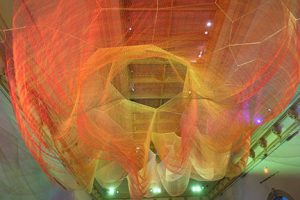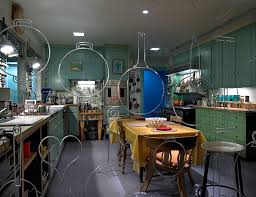By Professor Tiffany Banks On Tuesday, September 30th , students from my COMM 108: Foundations…

For our second museum visit, we found ourselves at the newly-renovated and reopened Renwick Gallery where we were met by curators Nicholas Bell and Nora Atkinson for our special look at the Wonder Exhibit.
Prior to visiting the exhibit, we were treated to a tour of the lower levels of the museum, which provided us with an understanding of just how every inch of the building is utilized. Fellows were given a history of the building which was helpful as for many, this Smithsonian Museum which is not on the Mall but near the White House, was much less familiar to them.
Both William Wilson Corcoran, who wanted to build a museum to house his art collection, and James Renwick, Jr, the architect who designed it, had traveled to the Universal Exposition in France in 1855, and been inspired by the new wing of the Louvre, the Tuileries, and as a result, the then-Corcoran Museum was designed to echo the Louvre. While the building itself served briefly as a museum , historical events led to its being commandeered to be the headquarters of the Union Army and later, Federal Court of Claims. In fact, its return to museum status seemed unlikely and in the late 1950s the building was slated for demolition. Fortunately, due to the efforts of First Lady Jacqueline Kennedy, it was saved from the wrecking ball, eventually becoming a part of the Smithsonian Institution with the mission of serving as the “craft, art and design” extension of the American Art Museum. Understanding the drive to preserve the building with its unique architecture reminded us that the building itself is important to Smithsonian’s mission of telling the history of America.
Wonder, the exhibit that heralded the reopening of the refurbished Renwick Gallery was designed to be an affirmation of the value of the building and of museums in general. Consisting of nine large scale installations, Wonder aims to provide a unique experience to each visitor. The Fellows heard about the process of soliciting and selecting the artists whose work would fill existing galleries, with each room serving as a palette for the particular installation it housed.
Following this brief overview to the exhibit, the Fellows toured Wonder before regrouping for further conversation. Listening to each other’s reactions and perceptions along with being able to ask Nicolas and Nora additional questions served to deepen appreciation for all that had been seen. In fact, everyone in the room agreed they planned to return to revisit the exhibit.





This Post Has 0 Comments